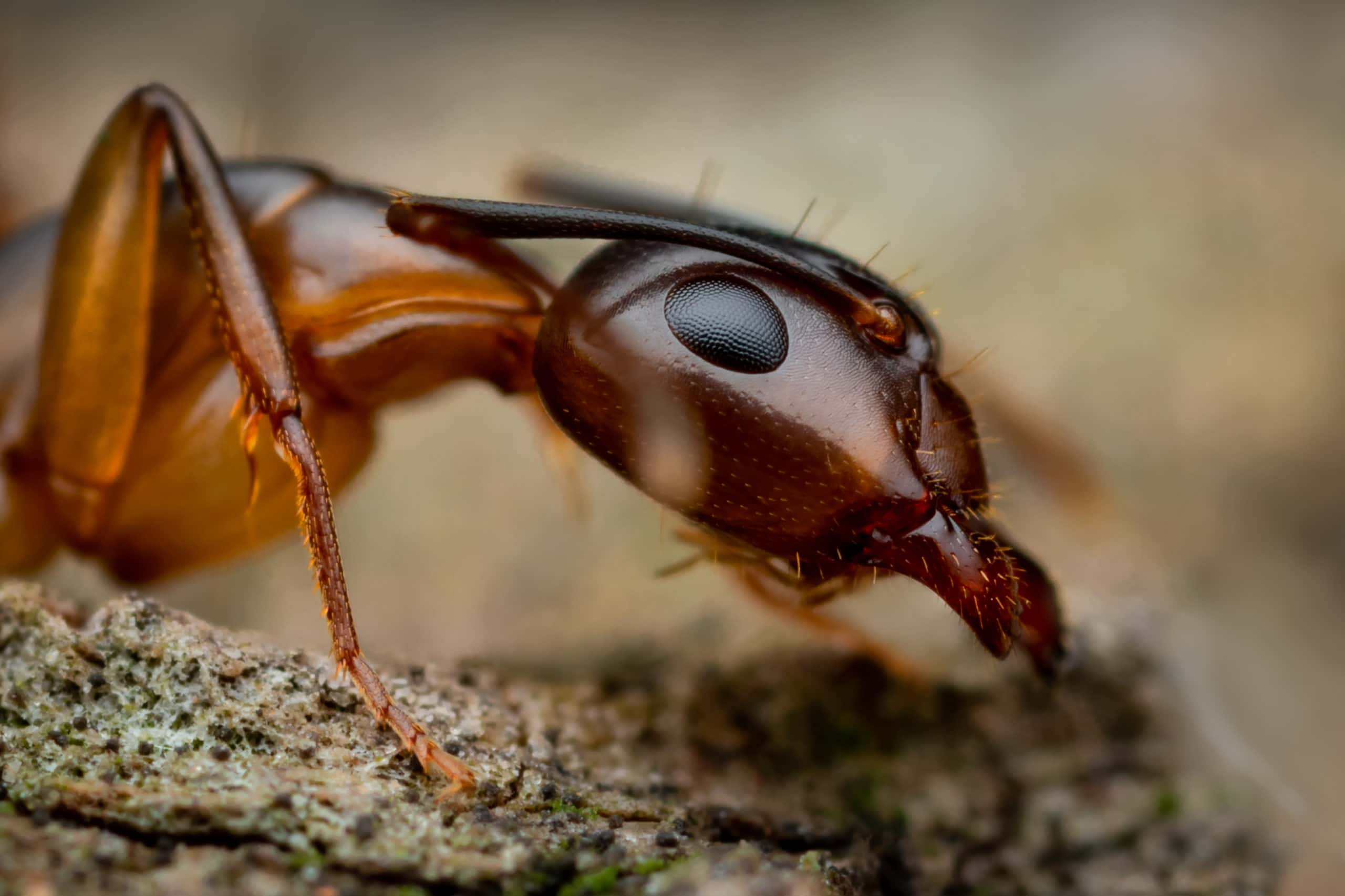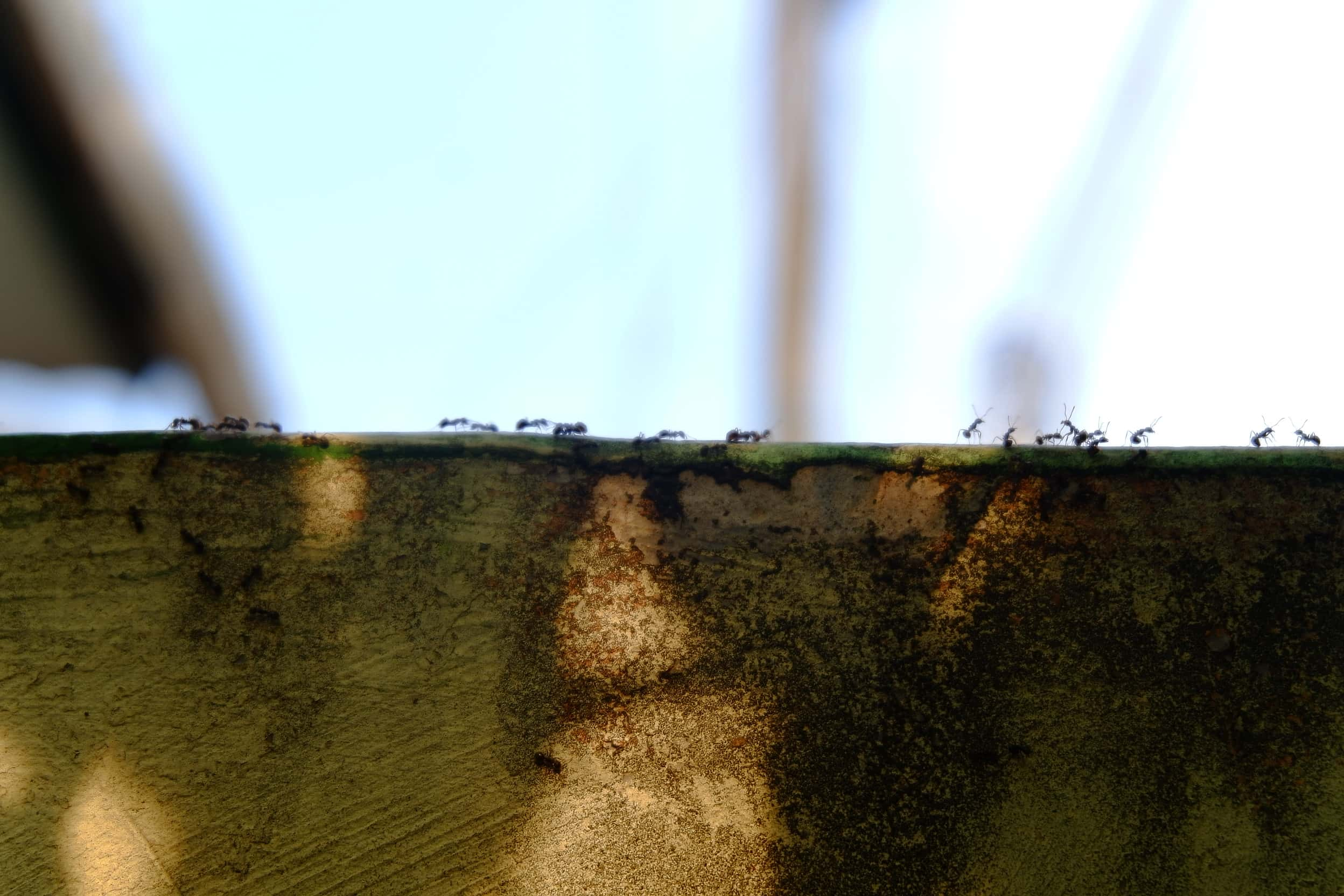Allow me to introduce to you the Argentine ant. It probably doesn't look like much to you at first. First of all, they're tiny: The workers grow 2.8 mm long at most, and even the queens are less than a centimeter. These guys aren't particularly great nest builders, either. They can't dig very well, so their nests usually just sit on the ground. But what if I told you that the Argentine ant is...taking over the entire world.
There's more to this unremarkable little insect than meets the eye.
Yass Queen
Here's a fun word for you: Polygynous. That one word is the reason that the Argentine ant is taking over the world. You see, most ants are monogynous. That means they have one queen who lays all the eggs for an entire colony. But if mono means one, then rail means...whoops, I mean, then poly means "multiple." Argentine ant colonies have multiple egg-laying queens. Turns out, that's a very helpful trait.
Multiple queens laying eggs means that Argentine ant colonies can grow extremely quickly. Eventually, nests will get so big that queens will wander off and found new nests. But with Argentine ants, individuals in these new nests will still have the exact same chemical profile as the queen's original nest. That means, as far as the Argentine ants are concerned, those new nests are all just a part of the same big colony. Workers or queens can move freely between them.
That means colonies can get big. Really big.
They're...EVERYWHERE
Argentine ants are native to the Paraná River drainage basin in South America. But, like lots of animals, they have spent the last few centuries hitching rides on our ships and seeing the sights. But there are your run-of-the-mill invasive species...and then there's the Argentine ant.
Today, you can find Argentine ants in at least 15 different countries on six continents. They're on a ton of oceanic islands as well. But whenever Argentine ants get to a new place, they don't just carve out a little niche for themselves. They start a colony, then queens branch off and make their own, and so and so forth until...
 Shutterstock Iguazu Falls, on the border of Argentina and Brazil
Shutterstock Iguazu Falls, on the border of Argentina and Brazil
Super Mega
One of the most documented Argentine ant colonies, the "Very Large Colony," stretches from San Diego to San Francisco. It likely contains nearly one trillion ants. Trillion. It covers hundreds of miles, and yet ants from the farthest corners of its territory will still cooperate when brought together.
But wait, it still gets crazier. Researchers from the University of Tokyo took Argentine ants from all over the globe and found something shocking.
Ants from super-colonies in California, Japan, and the Mediterranean ALL shared the same genetic makeup. They weren't just from three super-colonies—they were all part of a global mega-colony. That officially made it the largest cooperative apparatus in the entire animal kingdom.
And if you're like me, you might have thought, "But come on, just because they have the same genetics, that doesn't mean they're the same colony! They live on opposite sides of the planet!" But when the research team brought individuals from these different super-colonies together, they immediately started working together like they were lifelong pals.
The mega-colony is real, and it's huge.

Sign up to our newsletter.
History’s most fascinating stories and darkest secrets, delivered to your inbox daily. Making distraction rewarding since 2017.
It's Starship Troopers All Over Again
But the mega-colony doesn't make up all Argentine ants. There are still plenty of distinct colonies, and some of them have started to overlap—and they definitely don't get along. Turns out, there are massive wars going on, all across the world, right under our feet.
As researchers have begun studying this invasive species more closely, they've discovered conflicts between super-colonies that stretch for miles and miles.
The largest ant war yet documented is between the Very Large Colony and the neighboring Lake Hodges Colony. Researchers estimate that thirty million ants give their lives to the fight every single year. Nests will gather strike parties to attack the other colony in raids that last for several hours at a time.
And the worst part about this war? It never ends. Once two supercolonies bump into each other, they just keep on sending wave after wave of soldiers endlessly. Some researchers have observed ant battles continuing on top of the bodies of hundreds of felled soldiers. It's a bloodbath. (Ok, ants don't technically have blood, but you understand the imagery).
They Go Wild On Vacation
But want to know the weirdest thing about Argentine ants? In their native range, they aren't the world-conquering leviathan that has taken over most of the globe. They form normal colonies, and different groups will be genetically diverse. They're pretty much like any other similar ant.
It's only once Argentine ants arrived in places where they lacked competition that they turned into a monster. Once they left their home, they became one of the most dangerous invasive species on Earth. They just keep spreading, and they're not showing much sign of slowing down.
Us humans have held the top spot for a while now, but is the Argentine ant coming for us? Only time will tell.












